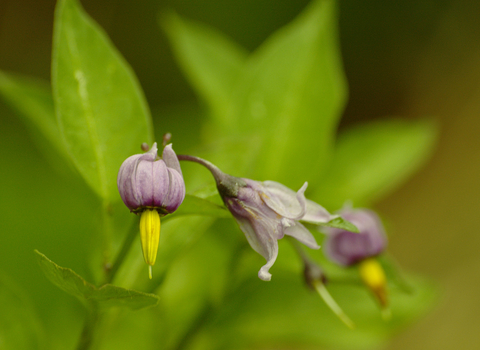
©Anne Tanne
Bittersweet
Bittersweet is a nightshade, so is toxic; its bright red berries may be tempting, but can cause serious illness. Found in hedgerows and gardens, it has purple flowers with yellow stamens.
Scientific name
Solanum dulcamaraWhen to see
May to OctoberSpecies information
Category
Statistics
Height: up to 1.5mCommon.
